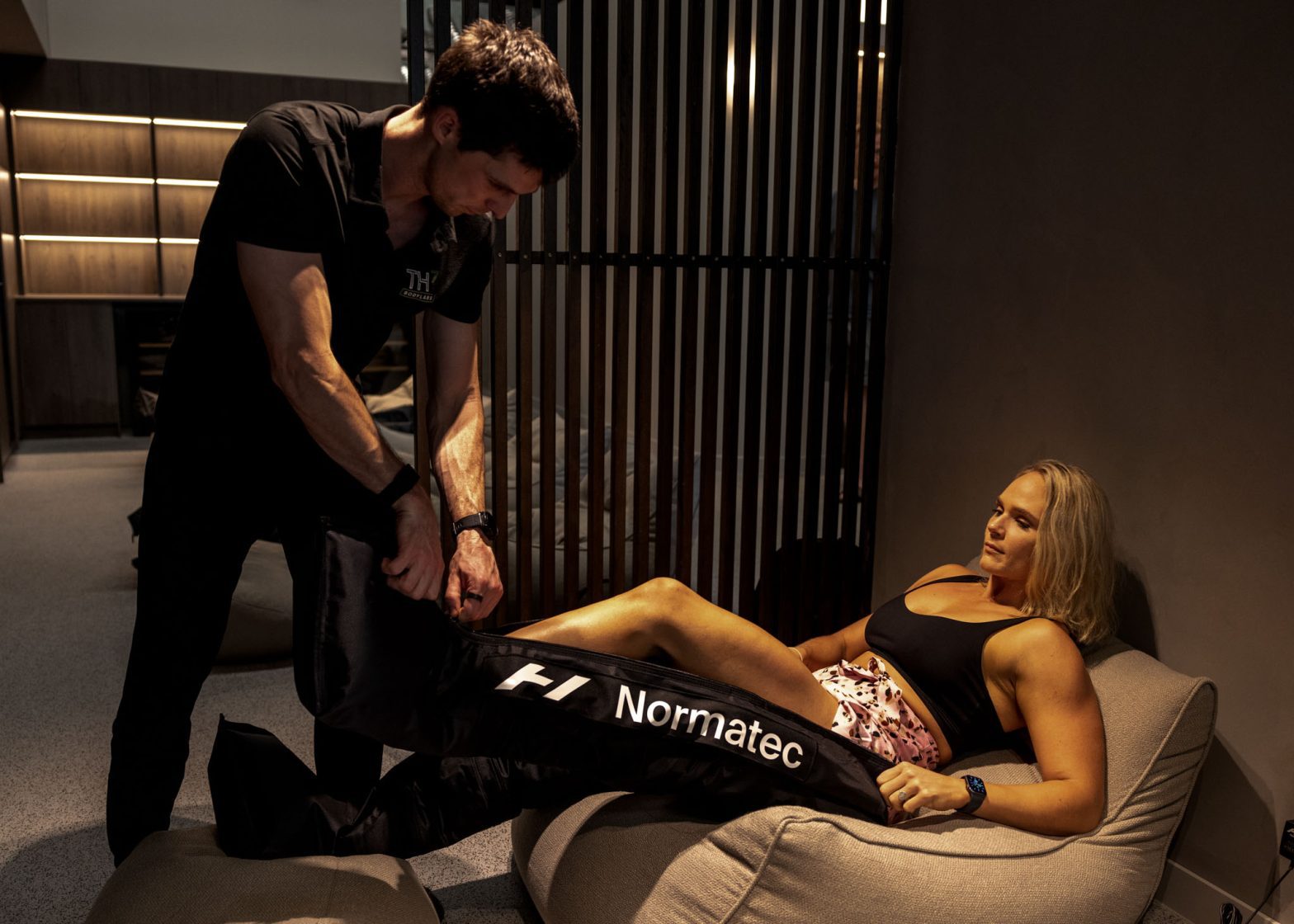WHAT ARE THE DIFFERENT TYPES OF COMPRESSION THERAPY?
The different types of compression therapy include the following:
COMPRESSION SOCKS
Compression socks are a type of compression therapy. They are usually made of elastic and are knee-high or thigh-high. Compression socks help to reduce swelling, pain, and fatigue. They also improve blood circulation and can prevent blood clots from forming. Compression socks are often used by people who have diabetes, varicose veins, or other conditions that cause poor blood circulation. Compression socks are also sometimes used by pregnant women and athletes.
COMPRESSION SLEEVES
Compression sleeves are compression garments that are worn on the arms or legs. They provide compression to the muscles and help to improve blood circulation. Compression sleeves are often used by athletes to prevent injuries and to help them recover from workouts.
COMPRESSION WRAPS
Compression wraps are most commonly used on the lower extremities, such as the calves, ankles, and feet. They are also sometimes used on the arms. The compression wraps work by applying pressure to the limb, which helps to reduce swelling. The compression wraps can be applied both before and after exercise, and they can be worn for a period of time or overnight.
There are a few different types of compression wraps available, and the type that you choose will depend on your individual needs. There are compression wraps that are made from an elastic material, and there are also wraps that have Velcro closures. The compression wraps that are made from elastic material are typically more comfortable to wear, but they can be more difficult to put on and take off. The compression wraps that have Velcro closures are typically easier to put on and take off, but they may not be as comfortable to wear.
COMPRESSION BANDAGES
Compression bandages are an important part of compression therapy. They are used to apply pressure to the affected area and help reduce swelling. There are different types of compression bandages available, so it is important to choose one that is appropriate for your condition. Your doctor or therapist will be able to advise you on which type of compression bandage is best for you.
COMPRESSION BOOTS – THE TH7 SOLUTION
Compression boots from TH7 BodyLbas are an exciting new development in compression therapy. Unlike traditional compression socks, boots provide a much higher level of compression, making them ideal for those suffering from conditions such as lymphedema and venous insufficiency.
The Normatec compression boots by TH7 BodyLabs are a cutting-edge technology that can help you recover from strenuous activity more quickly. They work by using compressed air to massage your limbs and stimulate lymphatic drainage to decrease inflammation, remove waste products, and significantly lower blood lactate levels. The Normatec pulse technology will transport fluid out of your limbs in order to alleviate pain and thus speed up your recovery. This is an extremely effective method of recovery that can help you get back to your normal activities more quickly and with less pain.
The Normatec compression boots serve as an effective medical compression device that helps contribute to the success of medical compression treatment. Paired with medical compression stockings, the Normatec compression boots will help enhance the deep venous system.
WHAT SHOULD COMPRESSION THERAPY BE USED FOR?
Compression therapy should be used for a variety of conditions, including:
- muscle recovery
- reducing inflammation
- treating injuries
- promoting circulation
As long as compression therapy is used correctly, it can be an effective treatment for these issues. With regular use, compression therapy can help improve your overall health and well-being.
If you’re interested in compression therapy, be sure to talk to your doctor or a certified therapist. They can help you determine if compression therapy is right for you and create a treatment plan that meets your needs.
WHEN SHOULD COMPRESSION THERAPY BE USED?
Compression therapy should be used when there is swelling present, or when there is a risk of swelling. It can also be used to help speed up the healing process after an injury. Compression therapy can also be helpful in preventing injuries by providing support to the muscles and joints. Most of the time, compression therapy is used on an as-needed basis. However, there are some people who may need to use compression therapy on a daily basis.
For example, compression therapy may be recommended for people who have:
- been diagnosed with lymphedema
- had surgery
- suffered an injury
- feeling of heavy/lethargic legs
- have a condition that causes swelling (such as diabetes or heart disease)
WHAT DOES COMPRESSION THERAPY FEEL LIKE?
Compression therapy is often compared to getting a deep-tissue massage. The compression can be quite firm, but should never be painful. You may feel a sense of pressure and fullness as the treatments progress.
Most people report feeling relaxed and rejuvenated after compression therapy sessions. Many even say they sleep better and have more energy during the day! Plus, the results are cumulative, so you’ll continue to feel the benefits of compression therapy long after your last session.
WHAT ARE THE BENEFITS OF COMPRESSION THERAPY?
The benefits of compression therapy are many and varied. Compression therapy can help to improve blood circulation, reduce swelling, relieve pain, and speed up the healing process. It can also help to prevent injuries by providing support and stability to the muscles and joints. Some other benefits of compression therapy include the following:
- Improve blood flow
- Reduce soreness
- Speeds up muscle recovery
FINAL THOUGHTS
Compression therapy is a safe and effective treatment for many conditions. It works by applying compression to the affected area to reduce swelling and promote healing. There are different types of compression therapy, and each has its own benefits.
Compression therapy may be a good option for you if you’re looking for a non-invasive way to treat your pain or injuries. Just be sure to consult with your doctor first to see if you will be able to benefit from compression therapy.




